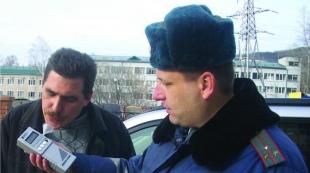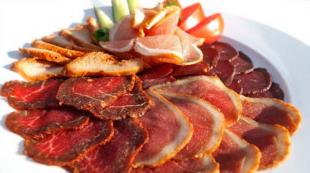Why Admiral Ushakov got into history. Fedor Fedorovich Ushakov, Admiral: biography
February 24 marks the 274th anniversary of the birth of the most outstanding naval commander in the history of Russia - Fedor Fedorovich Ushakov.
Throughout his career, he did not lose a single ship and not a single sailor captured. He never backed down in battle. Moreover, in smaller numbers, he won brilliant victories, primarily over Turkey and France in the waters of the Black and Mediterranean Seas. Ushakov was also a skilled diplomat, who proved himself during the creation of the Republic of the Seven Islands under the protectorate of Russia and Turkey. Ushakov was the founder of the latest tactics at sea and one of the creators of such troops as the marines.
In 2001, the Russian Orthodox Church canonized him as a righteous warrior. The Russian Military Historical Society, together with the Ministry of Defense of the Russian Federation and the Russian Orthodox Church, leads consistent work to preserve the memory of Fedor Ushakov. With the participation of the Mordovian regional branch of the RVIO, a year was held (2017) dedicated to Admiral Ushakov, full of scientific seminars, thematic round tables and meetings. And the Zvezda TV channel shot the documentary film Ushakov. Admiral by the grace of God." The Society also contributed to the installation of two large anchors of the Russian Navy on the territory of the temple complex of the holy righteous warrior Theodore Ushakov in Yuzhny Butovo. The name of Fedor Fedorovich is honored by several generations of warships of our fleet. And in 1944, during the Great Patriotic War The Order of Ushakov and the Ushakov Medal were established, which to this day are the highest and most honorable naval awards for every Russian military sailor.
F.F. Ushakov. Source: https://pravoslavie.ru
At the dawn of glory
Fedor Fedorovich Ushakov was born on February 24 (February 13 according to the old style) in 1745 in the village of Burnakovo (now the Rybinsk district of the Yaroslavl region) into a family of petty nobles. The father of the future admiral, Fedor Ignatievich, served as a sergeant of the Life Guards until he was retired, and Paraskeva Nikitichna's mother was engaged in housekeeping and household arrangements. The upbringing of the future admiral was helped by his uncle Theodore Sanaksarsky and an old fellow villager who served in the Peter's fleet. From childhood, Ushakov dreamed of the sea, listening to the stories of an old sailor. Fyodor loved to carve wooden toy boats, and he had accumulated a whole small fleet.
At the age of 16, his parents sent him to study at the Naval gentry cadet corps in St. Petersburg. It should be noted that the children of rich families were not eager for the fleet, and basically the ranks of officers were replenished with the same one-dwellers like Ushakov. Fedor showed remarkable zeal and in 1766 graduated from the corps with honors, receiving the rank of midshipman. At first, he sailed across the Baltic Sea bypassing Norway to Arkhangelsk under the command of an experienced naval commander V. Ya. Chichagov. Then he served under the command of an experienced captain S.K. Greig, later a hero. Having received excellent practice, the young officer began to carry out his first independent tasks: he transferred ships from the Baltic to the Black Sea for the war with Turkey and participated in the repair and re-equipment of the Black Sea shipyards. Here he showed his tough character, never yielding to dishonest officials. In time, he receives his first ship, the 16-gun Modon, and repels the Turkish landing at Balaklava. After that, young Ushakov receives, perhaps, the most desirable appointment for a sailor in the Russian Empire - the captain of an imperial yacht. He is beginning to be recognized at court, but he is rushing with all his might into the ranks of the battle fleet, and his request is granted.

V. Ilyukhin. A.V. Suvorov and F.F. Ushakov in Sevastopol. Source: https://bm24.ru
New naval tactics
In 1783, Fyodor Ushakov was transferred to the Black Sea Fleet as commander of the laid down 66-gun ship St. Paul and sent to Kherson. Upon arrival, he was forced to deal with an epidemic of plague that had arisen in the city. With skillful and thoughtful actions, he isolated his crew, kindled fires around the camp and ordered the sailors to rub themselves with vinegar (not one of his sailors fell ill).
In 1787 the Russian-Turkish war began. On July 14, 1788, in the battle near the island of Fidonisi, Ushakov, with skillful maneuvers, with the support of three frigates, put the enemy to flight, causing him considerable damage. On July 19, 1790, Fedor Fedorovich defeated the Turkish squadron in the Kerch Strait (near Cape Takla), preventing it from landing on the Crimean coast. Having violated all the canons of classical tactics by creating a special reserve group, Ushakov won a landslide victory.

Battle of Kaliakria. Source: https://www.pinterest.se/
Ushakov professed truly Suvorov principles in tactics and methods of education and training of his sailors. He paid great attention to the personal skills of each individual sailor or gunner. They trained like this: on a swing made of ropes that imitated pitching, they installed a gun from which it was necessary to hit a sail installed in the sea on a wooden shield. Ushakov's crews have always been the best and were deadly different high precision fire. He was the ancestor of the new tactics of using the forces of the fleet. Creating a numerical superiority in key areas of the battle, he chose enemy flagships as targets, depriving the enemy fleet of command. He did not build his ships in line, attacked against the wind, at that time it was really a revolution in naval combat.
On August 11, 1791, at Cape Kaliakria (northern Bulgaria), Ushakov won the legendary battle, swiftly defeated the Turkish fleet, which was much superior to him, anchored. This defeat opened a sea route to Istanbul, the capital of Turkey. The Sultan was forced to conclude with Russia on favorable terms for us. Ushakov was awarded the orders of St. George 4th and 3rd degrees and St. Alexander Nevsky. After the war, he took up the arrangement of Sevastopol as the main base of the Black Sea Fleet with the rank of vice admiral.

February 24, 1745 was born Fedor Fedorovich Ushakov, an outstanding Russian naval commander, admiral, commander of the Black Sea Fleet. Admiral Ushakov is recognized as the founder of the Russian tactical school in naval affairs. During the Russian-Turkish war of 1787-1791, Ushakov made a serious contribution to the development of the tactics of the sailing fleet. Largely thanks to Ushakov, Russia won the Russian-Turkish war. We will talk about five brilliant victories of Ushakov.
Battle of Fidonisi Island
On July 14, 1788, the battle of Fidonisi took place - the first naval battle of the Russian-Turkish war between the fleets of Russia and the Ottoman Empire.
Occupying a windward position, the Turkish fleet lined up in two wake columns and began to descend to the Russian line. The first column of the Turks, led by Eski-Gassan, attacked the Russian vanguard under the command of Ushakov. After a brief skirmish with two Russian frigates - "Berislav" and "Strela" - and 50-gun frigates, two Turkish battleships were forced to withdraw from the battle.
The ship "St. Paul" under the command of Ushakov rushed to the aid of the frigates. The ship of Kapudan Pasha was under fire from frigates from one side, and from the other by Ushakov's ship. The concentrated firing of Russian ships caused serious damage to the Turkish flagship.
Finally, a successful salvo from the frigate damaged the stern and mizzen mast of the flagship, and Gassan Pasha began to rapidly leave the battlefield. The entire Turkish fleet followed him.
Despite the fact that the battle at Fidonisi did not significantly affect the course of the campaign, it was the first victory of the fleet, a victory over vastly superior enemy forces, which had great psychological significance.
The Turkish fleet no longer had dominance over the sea, and the Crimea was not in danger of landing.
Kerch naval battle
The battle took place on July 8, 1790. The Turkish squadron consisted of 10 battleships, 8 frigates, 36 auxiliary ships. She went from Turkey to land troops in the Crimea. She was met by a Russian squadron (10 battleships, 6 frigates, 1 bombardment ship, 16 auxiliary ships) under the command of Ushakov.
Using the windward position and superiority in artillery (1100 guns against 836), the Turkish fleet attacked the Russian on the move, directing its main blow to the vanguard of the fleet brigadier G.K. Golenkin. However, he withstood the attack of the enemy and with accurate return fire brought down his offensive impulse. Kapudan Pasha nevertheless continued his onslaught, reinforcing the forces in the direction of the main attack with ships with large guns. Seeing this, Ushakov, separating the weakest frigates, closed the ships tighter and hurried to help the vanguard.
With this maneuver, Ushakov tried to divert the enemy to weak ships, dividing his forces. However, Hussein Pasha increasingly increased pressure on the vanguard.
In the ensuing battle, it turned out that the cannonballs from the Russian frigates, placed in line due to the lack of battleships, did not reach the enemy. Then Ushakov gave them a signal to leave the line for possible assistance to the vanguard, and the rest of the ships to close the distance formed between them. Unaware of the true intentions of the Russian flagship, the Turks were very happy about this circumstance. Their vice admiral's ship, leaving the line and becoming the advanced one, began to descend on the Russian avant-garde in order to bypass it.
But Ushakov foresaw the possible development of events, and therefore, instantly assessing the situation, gave a signal to the reserve frigates to protect their forward ships. The frigates arrived in time and forced the Turkish Vice Admiral to pass between the lines under the crushing fire of the Russian ships.
The victory of the Russian fleet in the Battle of Kerch thwarted the plans of the Turkish command to seize the Crimea.
Battle of Cape Tendra
On the morning of August 28, 1790, the Turkish fleet under the command of the young Kapudan Pasha Hussein, consisting of 14 ships of the line, 8 frigates and 14 small ships, was at anchor and discovered the Russian fleet, sailing under full sail in a marching order of three columns, consisting of 5 linear ships, 11 frigates and 20 smaller vessels under the command of Ushakov.
Using the change in battle formation that justified itself in the Kerch battle, Ushakov withdrew three frigates from the line - John the Warrior, Jerome and the Protection of the Virgin - to provide a maneuverable reserve in case of a change in the wind and a possible enemy attack from two sides.
The tactics of Ushakov's actions had an active offensive character. If in previous battles the Black Sea Fleet initially carried out defensive actions with a transition to a counterattack, then in this case, a decisive attack with a clear tactical plan initially took place. The surprise factor was used, and the principles of concentrating forces in the direction of the main attack and mutual support were skillfully implemented.
The victory at Tendra left a bright mark in the combat annals of the Russian fleet. The federal law "On the days of military glory (victory days) of Russia" dated March 13, 1995, the victory day of the Russian squadron under the command of F.F. Ushakov over the Turkish squadron at Cape Tendra was declared the Day of Military Glory of Russia.
Battle of Cape Kaliakria
The battle took place on July 31, 1791. The Turkish fleet consisted of 18 battleships, 17 frigates and 43 smaller vessels anchored off the coast under the protection of coastal batteries. The Black Sea Fleet under the command of F.F. Ushakov consisted of 16 battleships, 2 frigates, 2 bombardment ships, 17 cruisers, a fireship and a rehearsal ship. The ratio of guns was 1800 against 980 in favor of the Turks.
To reduce the time of approach to the enemy, Ushakov began to approach him, remaining in the marching order of three columns. As a result, the initial disadvantageous tactical position of the Black Sea Fleet became favorable for the attack. The situation began to take shape in favor of the Black Sea Fleet. The unexpected appearance of the Russian fleet led the enemy into confusion. On the Turkish ships, in a hurry, they began to cut the ropes and set the sails. Losing control on a steep wave, with gusty winds, several ships collided with each other and received damage.
As in the battle of Tendra, Ushakov's tactics were of an active offensive nature, and the use of tactics was determined by the specific situation.
At dawn on August 1, there was no longer a single enemy ship on the horizon. On August 8, Ushakov received news from Field Marshal N.V. Repnin about the conclusion of a truce on July 31 and the order to return to Sevastopol.
mediterranean hike
In 1798-1800, Emperor Paul I appointed Ushakov commander of the Russian naval forces in the Mediterranean. Ushakov's task was to support the actions of the troops of the anti-French coalition at sea.
During the Mediterranean campaign of 1798-1800, Ushakov proved himself to be a major naval commander, a skilled politician and diplomat in the creation of the Greek Republic of the Seven Islands under the protectorate of Russia and Turkey. He showed examples of the organization of interaction between the army and the navy during the capture of the Ionian Islands, and especially the island of Corfu (Kerkyra), during the liberation from the French of Italy, during the blockade of Ancona and Genoa, during the capture of Naples and Rome.
During the campaign, he had disagreements with the British Admiral Nelson regarding the blockade (Nelson's proposal) or the assault (Ushakov's proposal) of the island of Malta. As a result, the British agreed with Ushakov's arguments - and Malta was taken.
Video
The famous Russian naval commander Admiral Fedor Fedorovich Ushakov was born on February 13, 1744. He died on October 2, 1817 at the age of 73. During the years of military service, he showed outstanding tactical abilities. In 1789 he received the military rank of Rear Admiral. In 1793 he was awarded the rank of Vice Admiral. In 1799, the talented naval commander was awarded the rank of admiral. This man made a great contribution to the development of naval combat tactics of the sailing fleet. He did not act according to patterns and stereotypes, but was always guided by the specific situation and specific local conditions.
In battle, he showed extraordinary courage and determination. He neglected the generally accepted rule to put the command ship in the middle of the battle formation. The flagship was always ahead, and in the most dangerous place. Thus, the commander set an example of courage to the commanders of other warships.
Fedor Fedorovich instantly assessed the combat situation and made the only right decision that ensured the complete defeat of the enemy. This man entered the annals of history as the founder of the Russian tactical school of naval art. The memory of the courageous naval commander has not faded over the centuries. His name is well known not only in Russia, but all over the world.
Childhood
A glorious naval commander was born in the village of Burnakovo. Today, these lands belong to the Yaroslavl region, and there are no permanent residents in the village itself. In the 17th century it was a large settlement for 2 thousand peasant souls. It belonged to the noble family of the Ushakovs.
Immediately after birth, the baby was enrolled in military service. The boy's father, Fedor Ignatievich, once served in the Life Guards Preobrazhensky Regiment. But he assigned his son to the maritime department. In 1766, the young man graduated from the Naval Cadet Corps in St. Petersburg. He was sent to serve in the Baltic Fleet.
glorious deeds
In 1769, the young officer was transferred to the Azov Fleet. He took part in the Russian-Turkish war of 1768-1774. The main goal of this company was access to the Black Sea. The war ended with the signing of the Kyuchuk-Kainarji Treaty on July 21, 1771. According to him, the Russian Empire firmly established itself on the northern Black Sea coast.
Our hero also made a feasible contribution to the victory. He commanded a flat-bottomed artillery sailing vessel (pram). His task included military operations near the coastal fortifications of the enemy. In 1773 he was given command of the 16-gun warship Modon. In 1775 he became commander of a three-masted warship with two gun decks. Such sailboats were called frigates.
In 1780, Ushakov was awarded the highest honor. He was appointed commander of the imperial yacht. But in the character of a military officer there was no servility and desire for a well-fed, carefree life. Therefore, after 3 months of such service, our hero achieved a transfer to a battleship.
Battleships were larger than frigates. They were armed with up to 135 combat guns and a crew of up to 800 people. These were real floating fortresses. This is the ship that the future famous naval commander received under his command. It bore the name "Victor" and constantly cruised in the Mediterranean Sea, accompanying Russian merchant ships.
In 1783, our hero was sent to Kherson (a seaport on the Dnieper), where he dealt with the construction of warships. In the same year, an epidemic of plague broke out in Kherson. Military sailors took an active part in the fight against it. They built and guarded tent camps, where they brought the sick, and provided active medical care. For the fight against the plague, the future Admiral Ushakov received the Order of St. Vladimir IV degree.
Russian-Turkish war (1787-1791)
Quiet life ended in 1787 with the beginning of the Russian-Turkish war. Our hero received under his command the battleship of the Russian fleet "Saint Pavel". It was laid down at the Kherson shipyard and launched in 1784. With the outbreak of hostilities, as part of a squadron under the command of Rear Admiral M. I. Voinovich, the ship made a raid towards Varna. Caught in a strong storm, lost the masts of the mainsail and mizzen. Using only the foremast, returned to the port of Sevastopol.
July 3, 1788 "St. Paul" took part in the naval battle of Fridonosi as part of the Voinovich squadron. The Turkish fleet was defeated, and Russian ships pursued enemy ships for 2 days. At the beginning of 1789, Fedor Fedorovich was awarded the rank of Rear Admiral. He received command of the squadron, and "St. Paul" became the flagship in it.

On July 8, 1790, the Battle of Kerch took place.. The forces of the Turkish and Russian squadrons were approximately equal. In this naval battle, our hero fully revealed his military talent. He proved that he is able to think creatively and extraordinary. The flagship was ahead and took the main blow of the enemy. At the same time, the rear admiral controlled other ships, in no way infringing on the initiative of their commanders. This battle showed that the Russian sailors were superior to the Turks in fire training, discipline and training. The Turkish fleet was defeated. Thus, the capture of the Crimea was thwarted.
On August 28, the battle took place at Cape Tendra. This time, the forces of the Turks were almost 2 times superior to the Russian ones. But Ushakov's tactics were of a fearless offensive character. The Russian fleet effectively used the element of surprise. Forces were competently and skillfully concentrated in the direction of the main blows. The firepower of the ships was used to the maximum. To do this, it was necessary to significantly reduce the distance of the volley, which had never been done before.
The naval commander himself took an active part in the battle. He was always in the most dangerous and critical places. Thus, he was a model of selfless courage, courage and courage. As a result, the Turkish fleet was defeated. The enemy lost more than 2 thousand people killed and wounded. The losses of the Russian fleet were estimated at only 2 sailors killed and 30 wounded.
On July 31, 1791, the battle took place at Cape Kaliakria.. The enemy forces exceeded the forces of the Russian flotilla by almost 2 times. The Turkish fleet included desperate Algerian corsairs. Of the 18 battleships, they owned 7.
The battle lasted all day and ended with the victory of the Russian fleet. But the victors did not pursue the vanquished. This was prevented by the darkness that descended on the sea surface. The next morning, not a single Turkish ship was visible on the horizon, and soon an order was received to stop hostilities, as the Turks requested a truce.
In this battle, active offensive tactics were again used. The surprise factor played a decisive role in the victory. A powerful blow was dealt to the flagship and the ships accompanying it. This disrupted the order of battle of the Turkish fleet, introduced confusion and panic into the actions of people. A powerful fire attack from a short distance completed everything. At the same time, the enemy suffered huge losses both in manpower and materiel.
Service in the Mediterranean
In 1798, our hero was appointed commander of all naval forces in the Mediterranean. This appointment was not only military, but also political. The point was that France from 1792 to 1802 was shaken by revolutionary wars. In 1798, France took control of Switzerland. In opposition to this, the European countries created a coalition, which included England, Russia, Sweden, Austria, Southern Italy (Kingdom of Naples) and Turkey.
On land, Russian-Austrian troops smashed the French under the command of Suvorov. And at the head of the naval forces stood Admiral Ushakov. His military talent was in no way inferior to the talent of the illustrious generalissimo, he only showed himself on the water surface, and not on the earth's firmament.
Fedor Fedorovich stood at the head of the combined Russian-Turkish squadron. Its main task was to capture the island of Corfu, occupied by the French invaders. They concentrated large land and sea forces on the island. The allied squadron blocked the island from the sea, and early in the morning of February 18, 1799, the assault on the French fortifications began. On February 20, the invaders threw out the white flag. For this victory, our hero received the rank of admiral.
The further actions of the talented naval commander were to strengthen the military and political power of the Russian Empire in the Mediterranean. It should be noted that Fedor Fedorovich coped with this task brilliantly. He supported the British in the siege of Malta. But in June 1800, Austria made peace with France. The coalition has ceased to be a single and monolithic force. Therefore, the presence of the Russian fleet in the Mediterranean became inappropriate. At the end of October 1800, the squadron returned to the port of Sevastopol after 2 and a half years of sailing.
Career decline
After the assassination of Paul I, the Russian throne was taken by his son Alexander I. He treated the brilliant naval commander without due respect. Fedor Fedorovich was removed from all posts and given command of the Baltic Rowing Fleet. In 1807, our hero was dismissed.
He left for the Tambov province in the village of Alekseevka. Here they bought the estate in 1805. In 1812, the great naval commander did not participate in any military operations for health reasons. Died October 2, 1817. He was buried on the territory of the Sanaksar Monastery, 3 km from the city of Temnikov.
Canonization
In August 2001, the glorious Russian naval commander was canonized as a locally venerated saint. In 2004, he was canonized as a righteous saint. He is revered as the patron saint of the Russian naval forces.
Alexander Arsentiev
And his commander. Developed and applied maneuver tactics, scoring a number of major victories over the Turkish fleet. He successfully conducted the Mediterranean campaign of the Russian fleet during the war against France. He proved himself as a politician and diplomat during the creation of the Greek Republic of the Seven Islands.
Admiral Ushakov is a naval figure who glorified the still young Black Sea Fleet at that time. The Turks respectfully called him "Ushak Pasha". Not having a noble origin (his father was a collegiate registrar and an impoverished landowner), Fedor Fedorovich walked to the admiral's flag slowly and persistently, mastering maritime science and military art with perseverance. Ushakov, as a naval figure, highly raised the authority of the Russian fleet.
Biography
early years
The future admiral was born on February 24, 1744 in the village of Burnakovo, Romano-Borisoglebsky district (now the Rybinsk district of the Yaroslavl region). Father - Fedor Ignatievich Ushakov (1710-1781), a retired sergeant and nobleman, uncle - the elder Feodor Sanaksarsky.
Carier start
At the age of sixteen, Ushakov was sent to St. Petersburg, where he studied in the Naval Corps. After two years in the rank of midshipman, he made his first training voyage, which took place on the ship St. Eustathius. He graduated from the corps in 1766 - an officer, midshipman. In the same year he was enlisted in the galley fleet in the Baltic. For the first time, F.F. Ushakov got acquainted with the expanses of the sea on the Nargin kick, on which he sailed from Kronstadt to Arkhangelsk around Scandinavia.
At the end of the campaign of 1768, he was sent to the Don expedition, whose tasks included the opening of the Taganrog port and the establishment of a flotilla on the Don, which followed from the break in relations with Turkey. Ushakov was promoted to lieutenant in 1769, and already sailed along the Don, on ferries, to Taganrog. Until the conclusion of the Kyuchuk-Kainarji peace, he participated in protecting the coast of Crimea from the landings of the Turkish army and from the indignation of the Tatars (the key event was 1773, the battle near Balaklava).
The year 1776 for F. F. Ushakov was marked by a campaign to Livorno, in which he participated in the rank of lieutenant commander, and at the end of it he received the command of the frigate Pavel. Until 1779 he continued campaigns in the Adriatic Sea and the Archipelago. In 1780 he commanded the imperial yacht. The following year, he went to the Mediterranean for the second time, in the squadron of Rear Admiral Sukhotin, as commander of the Victor ship. After this campaign, Ushakov was appointed, in 1783, to Kherson, where he was during the construction of ships and managed to stop the infection brought there from Constantinople on merchant ships, for which in 1785, already a captain of the 1st rank, he was awarded the Order of St. Vladimir of the 4th class and received gratitude from the Admiralty Board.
Russo-Turkish War
In 1787, at the beginning of the war with Turkey, Ushakov was a captain of the brigadier rank. Having the ship Pavel in command, he participated in the first campaigns of the Black Sea Fleet, under the command of Rear Admiral Voinovich, including the battle of Fidonisi Island on July 8, 1788. The military glory of this admiral began in 1790, after Prince Potemkin entrusted Rear Admiral Ushakov with command of the Black Sea Fleet. At the start of that year's campaign, he outflanked east coast Black Sea from Sinop to Anapa and destroyed more than 26 enemy ships.
On July 8, commanding a fleet of 10 ships, 6 frigates, 2 firewalls and several small vessels, he repulsed the attack of the Turkish fleet near the Yenikol Strait, and finally defeated it near Hadji Bay on August 28 and 29. These victories brought Ushakov the orders of St. Vladimir 1st and St. George 2nd class. In 1791, he defeated the Turkish fleet at Kaliakria, and on December 29, 1791, upon the conclusion of peace in Iasi, he was awarded the Order of St. Alexander Nevsky. In 1793, Ushakov was promoted to vice admiral and in peacetime commanded practical squadrons on the Black Sea.
In August 1798, he received the highest order to go to Constantinople and, in conjunction with the Turkish squadron, go to the Archipelago in the Mediterranean Sea. Upon completion of the Russian-Turkish expedition in the Mediterranean Sea, Ushakov was awarded the rank of admiral, diamond signs of the Order of St. Alexander Nevsky and the commander's cross of St. John of Jerusalem. For his assistance, Sultan Selim III sent him two diamond snuffboxes, two diamond feathers and a fur coat rich in sable. After the capture of Corfu by Admiral Ushakov, two squadrons were sent to Ancona and to the shores of the Kingdom of Naples. Ushakov arrived in Palermo on 21 August. Having released his violent companions, the Turks, back home from there, accompanied by a squadron that came from the Baltic Sea (consisting of three ships and one frigate, under the command of Rear Admiral Kartsov), he sailed to Naples and back to Corfu, while Vice Admirals P. V. Pustoshkin and P.K. Kartsov cruised off the coast of Sicily.
End of career
In July 1800, Ushakov, with the consent of the military council he had assembled, decided to return to Russia. The reason for this was both the poor condition of the ships of his fleet and the lack of food, as well as various political reasons. The government of the new Republic of the Seven United Islands, for their liberation from the enemy and the restoration of order, presented Fyodor Fedorovich from the island of Corfu with a golden sword with diamonds and with the inscription: "Corfu, deliverer of Ushakov." Ushakov left Corfu on 6 July. Upon arrival with the squadron in Constantinople, F.F. Ushakov was awarded honors from the Sultan, including an expensive diamond cheleng and five copper landing guns. His two-year campaign in the Mediterranean Sea was completed on October 26, in Sevastopol. Its result was the liberation from the enemy of such territories as the Ionian Islands, the Kingdom of Naples and the possessions of the pope. The King of the Two Sicilies awarded Ushakov the Order of St. Januarius, which, when worn, was ordered to be considered higher than the Order of St. Alexander Nevsky.
Last years
After such an active and commendable service, it was time for Admiral Ushakov to rest and rest. Since 1801, he has been in charge of the Baltic Rowing Fleet and all naval teams in St. Petersburg. On January 21, 1807, he was dismissed from service, due to illness, with a uniform and a half-pay pension. At the end of his service, he settled in the Temnikovsky district of the Tambov province, where he died in October 1817. He was buried there, in the Sanaksar monastery founded by his grandfather.
Personal characteristics according to the memoirs of contemporaries
It was said about F.F. Ushakov that he was very pious and kind, but quick-tempered, persistent and fair. He was very strict with the officers, but loved by the sailors. He also had respect among the Turks, who called him Pasha Usak. His eminent contemporaries Suvorov and Nelson spoke of him in a very original way, emphasizing his independence in actions and decisions, as well as the unprecedented courage of the admiral.
perpetuation of memory
Along with the image of the hero of the defense of Sevastopol, Admiral Nakhimov, the image of the naval commander, Admiral F.F. Ushakov, was made in the Soviet period a symbol of the glory and victorious traditions of the Russian fleet.
Coastal defense battleship "Admiral Ushakov"
- A bay in the southeastern part of the Barents Sea and a cape on the northern coast of the Sea of Okhotsk are named after the naval commander.
- The name of Ushakov was carried by warships of the Navy:
- The coastal defense battleship Admiral Ushakov was built in 1893 and died in the Battle of Tsushima (1905).
- Cruiser "Admiral Ushakov" (1953-1987).
- In 1992, the Kirov heavy nuclear missile cruiser, which by that time had been withdrawn from the fleet, was renamed the Admiral Ushakov.
- Since 2004, the project 956 destroyer Admiral Ushakov has been named after Ushakov.
- Self-elevating modular platform, engineering vessel "Fedor Ushakov", designed for various engineering works in coastal waters. The vessel is capable of carrying out any geological exploration and prospecting work in coastal waters with maximum depth 24 m, lay pipelines.

Light cruiser "Admiral Ushakov"
- Temnikov has local history museum named after Ushakov. In the museum, the admiral is dedicated to a separate room with rare exhibits (for example, the only surviving lifetime portrait). The museum, by the way, is located in the building of the former hospital for soldiers of the Patriotic War of 1812, built by Ushakov himself. There is also Ushakov Street in Temnikovo.
- FGOU VPO Maritime State Academy named after Admiral F. F. Ushakov Russia, Novorossiysk, Lenin Ave., 93.
- In Moscow there is Admiral Ushakov Boulevard and the metro station of the same name.
- In St. Petersburg, an embankment and a bridge were named in honor of Admiral Ushakov, and a monument was erected.
- In the city of Sevastopol, one of the squares was named after Ushakov (Commune Square was renamed in October 1954).
- In Minsk, a street is named after Ushakov.
- In the city of Aleksandrov in 1963, by the decision of the executive committee of the Aleksandrovsky city SND, 2nd Zagorodnaya Street was renamed Ushakov Street.

Destroyer "Admiral Ushakov"
- On March 3, 1944, the Presidium of the Supreme Soviet of the USSR established the military order of Ushakov of two degrees and the Ushakov medal.
- In the city of Rybinsk, in the vicinity of which the birthplace of the admiral is located, his bust was erected.
- In October 2002, a monument to Admiral Fyodor Ushakov was erected in Greece on the island of Corfu. There is also Ushakov street. Every year since 2002, the Days of memory of F. Ushakov have been held on the island of Corfu.
- On August 5, 2006, the Cathedral of the Holy Righteous Warrior Theodore Ushakov was opened in the city of Saransk.
- In the village of Alekseevka, the family estate of the Ushakov family, a monument was erected on the site where the estate of F. F. Ushakov was located.
- On August 10, 2006, in Bulgaria, the Bulgarian government, the commander of the Bulgarian Black Sea Fleet and the Russian ambassador opened, and the patriarch of the Bulgarian Orthodox Church, in concelebration with the Metropolitan of Varna, consecrated a new monument to Admiral Theodore Ushakov at Cape Kaliakra.
- The asteroid 3010 Ushakov is named after Ushakov.
- In the city of Sarov (Arzamas-16), Nizhny Novgorod region, on November 1, 1953, a street was named after Admiral Ushakov (the first street named after Admiral Ushakov in Russia-USSR), on August 4, 2006, a monument to the admiral was erected. On November 2, 2009, the Public Organization of Navy Veterans of the city of Sarov was named after Admiral F. F. Ushakov. On April 25, 2011, the veterans opened the museum exposition "The City and Ushakov", where the reconstructed uniform of F. Ushakov of the 1803 model, in which he was buried in the Sanaksar Monastery, is exhibited.
- In Kherson, the main avenue and the Kherson State Maritime Institute are named after Ushakov. In 1957, a monument to the naval commander was erected in front of the building of the ship-mechanical technical school. In 2002, a small church named after St. Fedor Ushakov was built.
- In Kerch on April 11, 2009, on the Day of the city's liberation from Nazi invaders, a monument to Admiral Fyodor Ushakov was erected.
- In Yaroslavl, a flotilla of young sailors was named after Ushakov.
- In Kaliningrad, the naval institute is named after the admiral.
- In the village of Molochkovo, Soletsky District, Novgorod Region, in 2000, a font in the name of St. Fedor Ushakov.
- In the city of Anapa, on the territory of the Institute of the Coast Guard of the FSB of Russia, on June 4, 2010, a temple-chapel was opened in honor of the righteous warrior Fyodor Ushakov, admiral of the Russian fleet, patron saint of military sailors.
- November 22, 2011 in Kaliningrad, the company "Arktikmorgeo" launched a unique multi-purpose engineering vessel "Fyodor Ushakov"News on the official website.
- Near the city of Temnikova (Mordovia) there is the village of Ushakovka.
- In Chelyabinsk, the street is named after Admiral F.F. Ushakov.
- In 2001, a bust was erected in Rostov-on-Don (Beregovaya Street).
- In 2006 in the city of Tutaev, Yaroslavl region. A monument (bust) was erected to Admiral Ushakov, which was erected on the site of the demolished monument to the revolutionary Panin. Also in Tutaev, the central street of the left-bank part of the city bears his name. Also in Tutaev, on Lunacharsky Street, a museum of the holy righteous Admiral Fyodor Ushakov and the Russian Navy was opened.[
- On April 24, 2013 in Messina, Sicily, Italy, the opening ceremony of the bust of the Russian Admiral Feodor Ushakov and the Square of Russian Sailors took place. FSUE "Marka" issued a postcard with the letter "B" for this reason (catalogue number 2013-106/1).
- On June 6, 2013, near the village of Hopylevo, where Fyodor Ushakov was baptized, a stele dedicated to the admiral was opened.
Image in art and media
- "Admiral Ushakov"- Soviet feature historical and biographical film dedicated to the life and work of Admiral Fedor Fedorovich Ushakov (1745-1817).
- Admiral Ushakov / Ed. and with entry. article by R. N. Mordvinov. T. 1-3.-M.: Voenmorizdat, 1951-1956.
- Ganichev V. N. Ushakov. - M.: Mol. guard, 1990. - 462 p.: ill. - (Life of remarkable people. Ser. biogr.; Issue 712).
- Ganichev V.N. Fleet Leader: About F.F. Ushakov. - M.: Patriot, 1994. - 463 p.: ill.
- Garmash P. E. Storming Corfu. - M .: Military Publishing, 1990.? 110 p. - (The heroic past of our Motherland).
- Zonin A. I. Fedor Fedorovich Ushakov. - M.: Mol. guard, 1944. - 88 p.
- Lebedev A. A. Frigates against ships. The inevitable and invaluable episode of the Russian-Turkish war of 1787-1791. SPb. IPK Gangut. 2011.
- Lebedev A.A. At the origins of the Black Sea Fleet of Russia. Azov flotilla in the struggle for the Crimea and in the creation of the Black Sea Fleet (1768-1783). SPb. IPK: Gangut. 2011.
- Lebedev A. A. From Fidonisi to Corfu. Behind the scenes of F. F. Ushakov's big victories // Gangut 2011-2012. No. 66 - 67
- Lebedev A. A. Events of July 12-15, 1791 on the Black Sea and their role in the history of the victories of F. F. Ushakov // Gangut. 2013. No. 75
- Lebedev A. A. Black Sea battles of F. F. Ushakov: unknown results of famous victories // Gangut. 2013. No. 76
- “Glory not to me, but to our people…”: To the 250th anniversary of the birth of F. F. Ushakov // Geopolitika i bezopasnost'. - 1994. - No. 2. - S. 180-196.
- Ovchinnikov V. D. Fedor Fedorovich Ushakov. - M.: Andreevsky flag, 1995. - 127 p.: ill.
- Ovchinnikov V.D. In service to the Fatherland. (Admiral F.F. Ushakov: unknown pages of life). Yaroslavl, 1993;
- Ovchinnikov V.D. Holy Righteous Admiral Fedor Ushakov. M.: MGF "Veteran of Moscow", 2001. - 376 p.
- Ovchinnikov V. D. Saint Admiral Ushakov (1745-1817). Historical narrative about the earthly path of the holy righteous warrior. M.: OLMA-PRESS, 2003. - 511 p.
- Ovchinnikov V.D. Pedigree of the Ushakovs // Marine collection, 1991. No. 9.
- Ovchinnikov V.D. Diamond crown of a naval commander // Russian House, 2001. No. 9.
- Ovchinnikov V.D. The son of the Fatherland is the son of God // Military History Journal, 2003. No. 2.
- Ovchinnikov V. D. “Akhtiyar is the best harbor in the world”: On the 220th anniversary of Sevastopol and the Black Sea Fleet // Military History Journal, 2003. No. 5.
- Ovchinnikov V.D. Naval legacy of Admiral F.F. Ushakov // Military History Journal, 2009. No. 2. P. 22-26.
- Ovchinnikov V. D. Spiritual and moral heritage of Admiral F. F. Ushakov // Military History Journal, 2009. No. 3. P. 43-45.
- Ovchinnikov V. D. Naval heritage of Admiral F. F. Ushakov and theoretical activity of M. A. Petrov to substantiate the tactics of sea battle // Marine collection, 2009. No. 3. P. 69-75.
- Ovchinnikov V.D. Admiral F.F. Ushakov. Homeland and holiness. Rybinsk: RMP, 2009. - 64 p.
- Petrov M. T. Admiral Ushakov. - M.: Armada, 1996.
- Rakovsky L. I. Admiral Ushakov: A novel. - Simferopol: Tavria, 1990. - 228 p.: ill. - (Mor. library; Book 63).
- Sergeev-Tsensky S. N. Admiral F. F. Ushakov: East. essay // Sergeev-Tsensky S. N. Knights of the Seas: Ist. essays, short stories, short stories, articles. - M.: Military Publishing House, 1985. -S. 36-63.
- Snegirev V. L. Admiral Ushakov. - M.: Military Publishing House, 1947. - 361 p.: ill. - (Remarkable Russian military figures).
- Stanislavskaya A. M. Political activity F. F. Ushakov in Greece, 1798-1800 - M.: Nauka, 1983. - 302 p.
- Tarle E.V. Admiral Ushakov on the Mediterranean Sea // Under the St. Andrew's Flag: Century XVIII. - M.: Patriot, 1994. - S. 514-525.
- Stanislavskaya A. M. Political activities of F. F. Ushakov in Greece. 1798-1800. M., 1983.
- Yakhontova M. S. "Ships go to the bastions"
- Lyubavin-Bogaevsky Yu.I., Ushakov-Bogaevsky O.V. City on the Midnight Mountains. Novocherkassk, 2011.
- Potrashkov S History of the Russian fleet. Eksmo, 2006
Chronological table
1743 (1745) year- Fedor Fedorovich Ushakov was born.1766- Graduated from the Naval Cadet Corps.
1769- Assigned to the Don (Azov) flotilla.
1768-1774 years- Participates in the Russian-Turkish war.
1775- Commands a frigate.
1780- Appointed commander of the imperial yacht, but soon abandons the court career.
1780-1782 years- Commands battleship"Victor", makes several trips from the Baltic to the Mediterranean Sea, protects Russian merchant ships from the piratical actions of the English fleet.
1783- Transferred to the Black Sea Fleet, oversees the construction of ships in Kherson, participates in the construction of the main fleet base in Sevastopol, fights against the plague.
1787- Commands the battleship "St. Paul". The Black Sea Fleet under the command of Ushakov wins over the Turkish fleet near the island of Fidonisi.
1789- Receives the rank of Rear Admiral.
1790- Commands the Black Sea Fleet. The Black Sea Fleet under the command of F.F. Ushakov wins in the battle of Kerch and near the island of Tendra over the Turkish fleet.
1791- Defeats the Turkish fleet at Cape Kaliakria.
1793- Receives the rank of vice admiral.
1798-1800 years- A squadron under the command of F. F. Ushakov makes a Mediterranean campaign to liberate the Ionian Islands from French occupation.
1799- Receives the rank of admiral. A squadron under the command of F. F. Ushakov storms a fortress on the island of Corfu.
1807- Resigns.
1812- He is elected head of the people's militia of the Tambov province, but due to illness he refuses the post.
1817 October 2- F. F. Ushakov died and was buried in the Sanaksar Monastery near the town of Temnikov.
He became famous for many glorious deeds, but the main thing is that he did not suffer a single defeat and did not lose a single warship. The site visited Kronstadt at a solemn event dedicated to the opening of the exhibition "Invincible Admiral: Holy Righteous Warrior Fyodor Ushakov" and recalled the main victories of the naval commander.
Life - to the Motherland, soul - to God!
Fedor Fedorovich Ushakov is an admiral who made a huge contribution to the development of the Russian navy. He was an amazing tactician and strategist, the founder of the Russian tactical naval school. Thanks to this, the admiral did not suffer a single defeat in 43 naval battles. And most of his battles went down in world history as the best conquests of the Russian Empire.
The future invincible warrior was born in 1745 in the village of Burnakovo, Yaroslavl province, into a poor noble family. From childhood, he raved about the sea, and as soon as he was 16 years old, he entered the Naval Noble Cadet Corps in St. Petersburg. His naval career began on the Baltic Sea, Ushakov immediately showed himself as a capable and courageous sailor. In the rank of midshipman, he took part in the first long-distance voyage from Kronstadt around Scandinavia to Spitsbergen to Arkhangelsk and back aboard the Nargin pink.
Shortly after graduating from college, the young lieutenant was sent to the Black Sea Fleet. The Russian-Turkish war began there, and Ushakov led operations to cover the mouth of the Don from the attack of Turkish squadrons, participated in the defense of Balaklava, and served as commander of a number of ships cruising on the Black Sea.
It was at that time that the career of a naval commander went up rapidly. He commands everything large quantity ships and in peacetime proves to be a wise captain.
The brave navigator was noticed by Empress Catherine II and noted with high confidence - she was appointed commander of the imperial yacht-galley "Tver". But Fedor Fedorovich strove to fight, a calm and measured life was not for him. Therefore, at his personal request, the future admiral was again transferred to military service. From the very beginning of the service, Ushakov followed the principle: "Life is for the Motherland, the soul is for God!"
Wise Captain
In 1783, an event occurred that characterized Ushakov not only as an excellent military leader, but also as a person who cares about people. The captain of the 2nd rank was sent to Kherson, where he was to form teams for seven ships. The plague was already rampant in the city.
“The naval officer showed himself in this field as a commander responsible for his people,” said the organizer and guide of the exhibition “Invincible Admiral: Holy Righteous Warrior Fyodor Ushakov” Daniil Shalyaev. - He introduced strict quarantine procedures and strictly monitored the observance of hygiene measures among the sailors and the population of Kherson. The terrible disease was localized, and Ushakov was awarded the Order of St. Vladimir of the 4th degree for this.
An exhibition dedicated to the legendary naval commander has opened in the Kronstadt Naval Cathedral. Photo: AiF / Artem Kurtov
The pinnacle of Fedor Fedorovich's career came in the Russian-Turkish war of 1787-1791. The Turks dreamed of taking revenge for the previous defeat, as a result of which they lost the Crimea. The Turkish Sultan wanted to completely ban the Russian fleet from appearing in the Black Sea. England and France were on his side. The Austrian fleet fought on our side.
On July 3, 1788, ships under the command of Ushakov near the island of Fidonisi clashed with 49 ships of the Turkish fleet. During the battle, which lasted 3 hours, Ushakov's ships cut off 2 enemy flagships from the main squadron and sank several ships. It was an unconditional victory.
“Fyodor Ushakov invented a unique tactic when the first strike of the fleet was focused on the flagship of the enemy,” continues Daniil Shalyaev. “Thanks to this, the linear formation of the enemy fleet was destroyed, disorientation began in the camp of the enemy.”
Usak Pasha
In 1790, the Battle of Kerch took place, in which the Turkish fleet significantly exceeded the forces of Rear Admiral Ushakov. But "Ushak-Pasha", as the Turks called him, outwitted the enemies. He gave the initiative to the commanders of other ships and foresaw the actions of the enemy. That battle clearly showed the superiority of Russian sailors in naval training and fire training. The battle finally buried the hopes of the Turks for the return of the Crimea.
Battles with vastly superior enemy forces became Admiral Ushakov's trademark. The clearest example of this is the battle at Cape Tendra, when the smaller Russian fleet fearlessly rushed into battle against a superior enemy. Seeing such audacity, the Turkish ships rushed into a disorderly retreat and were disoriented. But in terms of the number of onboard guns, the Turkish fleet was twice as large as the Russian one! In this battle, the Turks lost 5.5 thousand people, while our losses amounted to 21 killed and 25 wounded. It is curious that during all the battles, Commander-in-Chief Ushakov actively participated in all episodes of the battles, was in the most responsible and dangerous places and, with his fearlessness and courage, encouraged his subordinates to take decisive action.
Well, the most legendary naval battle led by Admiral Ushakov took place on March 2, 1799 off the island of Corfu. The fortress on the island was considered impregnable and until that day had never been taken by storm. Fortifications, powerful walls and towers, rocky shores made the capture of the citadel unrealistic. The French, who occupied the fortress, strengthened the defense with several artillery batteries. But for Russian sailors, as we already know, there were no unsolvable tasks. Ushakov blocked the fortress from the sea, and then threw a 2,000-strong landing force into the assault. A day later, the fortress capitulated, more than 200 French soldiers were killed, almost 3,000 people surrendered. Rich trophies were captured: 16 ships, 630 guns and other property. The Russians lost 31 killed and 100 wounded. Fedor Fedorovich Ushakov was awarded the rank of full admiral.
In the faces of the saints
In recent years, the legendary admiral, who did not know defeat, lived in his estate in Mordovia, was engaged in charity work. He was buried in the Sanaksar monastery. And in 2001, with the blessing of Patriarch Alexy II, celebrations were held dedicated to the canonization of the holy righteous warrior Theodore Ushakov. For the first time in the history of Christianity, a naval commander is glorified as a saint.
The ark with the relics arrived in Kronstadt from the Sanaksar Monastery. Photo: AiF / Artem Kurtov
In 2017, a good tradition appeared when the reliquary with the relics of a righteous warrior was delivered to the Kronstadt Naval Cathedral for veneration. This is happening on the eve of the celebration of the Day of the Navy. This happened this year too: the ark with the relics was delivered to the Petrovsky pier of Kronstadt. Then they were taken on a boat past the warships stationed on the Kronstadt roadstead.
In addition, a unique exhibition dedicated to the naval commander opened in the cathedral. The exposition presents more than 20 rarities: unique documents, maps of battles. The exhibition will tell about life path the most famous naval commander of Russia, about his victories, about the attitude towards sailors and the chosen monastic path at the end of earthly life, photos of awards and icons of Fyodor Ushakov.









